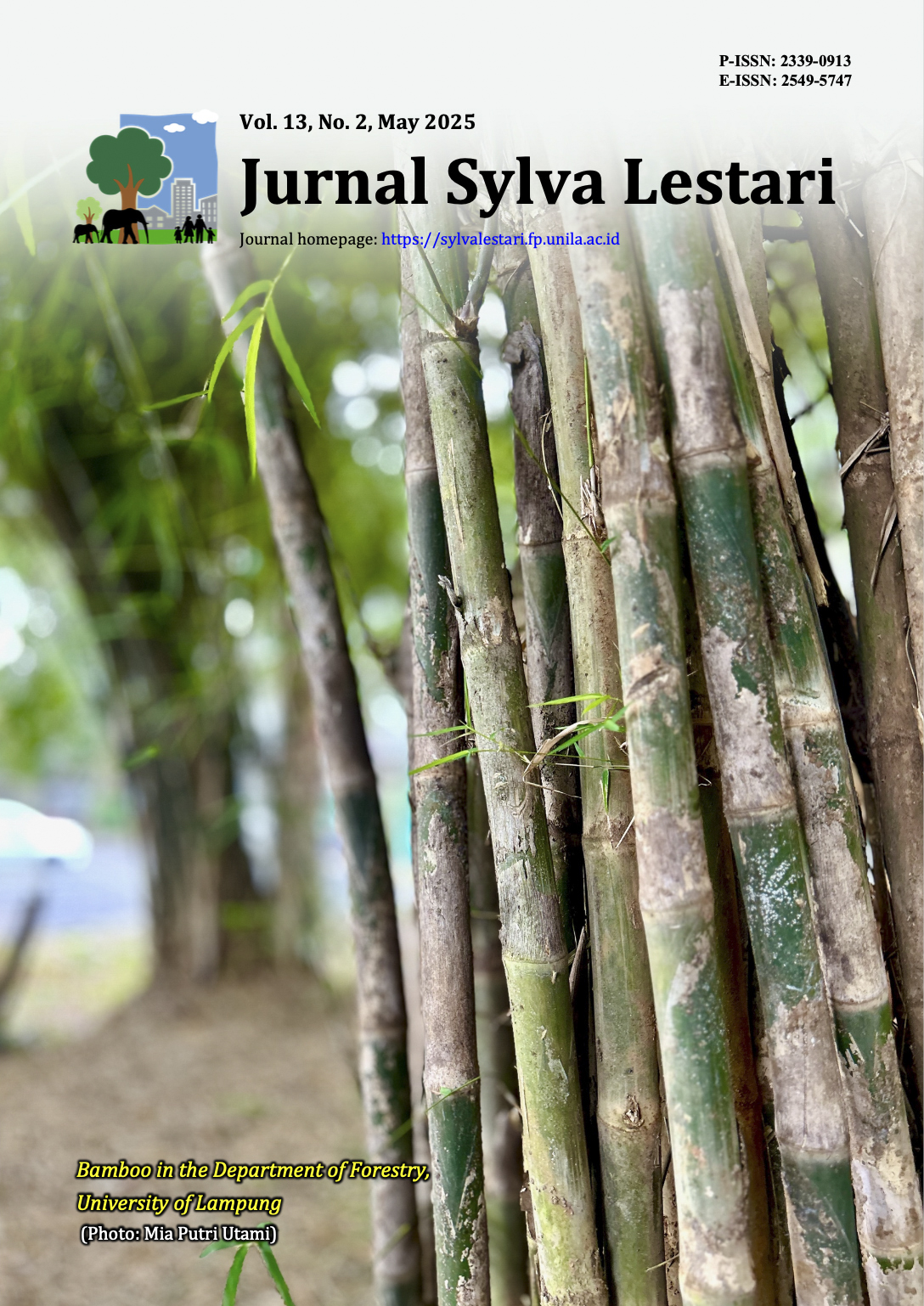Key Regional Commodities for Social Forestry Development in Penyabungan, Mandailing Natal Regency, North Sumatra
DOI:
https://doi.org/10.23960/jsl.v13i2.1120Abstract
Social forestry is a government initiative program that promotes sustainable forest management to enhance community welfare. Mandailing Natal Regency is rich in timber and non-timber forest products (NTFP). This study aims to analyze key and non-key NTFP commodities, changes in growth patterns, and shifts within the biopharmaceutical and fruit sectors relevant to the concept of multiple-use forestry (MUF) under the framework of social forestry in Forest Management Unit IX Penyabungan, Mandailing Natal Regency. Location Quotient (LQ) and Shift-Share (SS) analysis were combined to map and identify local commodities that could become key commodities for social forestry development in Penyabungan, Mandailing Natal Regency, North Sumatra. The results indicated that cinnamon, cocoa, sugar palm, and candlenuts are the essential NTFP commodities with LQ value > 1. Meanwhile, galangal, turmeric, laos, wild ginger, and curcuma dominate the biopharmaceutical products with LQ value > 1. Among fruits, starfruit, langsat, durian, guava, jengkol, mango, mangosteen, melinjo, jackfruit, petai, rambutan, and breadfruit are identified as essential commodities with LQ value > 1. While the MUF sectors related to forestry and fruit show positive growth trends, the biopharmaceutical sector exhibits a negative shift. This study suggests that agroforestry development in the social forest at Mandailing Natal could benefit the biopharmaceutical sector, creating job opportunities and increasing farmers’ incomes.
Keywords: agroforestry, community economy, location quotient, multi-use forestry, shift-share analysis
Downloads
Downloads
Published
How to Cite
Issue
Section
Statistics
 Abstract views: 262 times
Abstract views: 262 times PDF downloaded: 259 times
PDF downloaded: 259 times
Metrics
License
Copyright (c) 2025 Syufriandi Syaiful, Bahruni, Soni Trison, Dudung Darusman

This work is licensed under a Creative Commons Attribution-NonCommercial 4.0 International License.
Authors retain copyright and grant the journal right of first publication with the work simultaneously licensed under a Creative Commons Attribution-NonCommercial 4.0 Licence that allows others to share the work with an acknowledgement of the work's authorship and initial publication in this journal.
Authors are able to enter into separate, additional contractual arrangements for the non-exclusive distribution of the journal's published version of the work (e.g., post it to an institutional repository or publish it in a book), with an acknowledgement of its initial publication in this journal.
Authors are permitted and encouraged to post their work online (e.g., in institutional repositories or on their website) prior to and during the submission process, as it can lead to productive exchanges, as well as earlier and greater citation of published work (See The Effect of Open Access).









